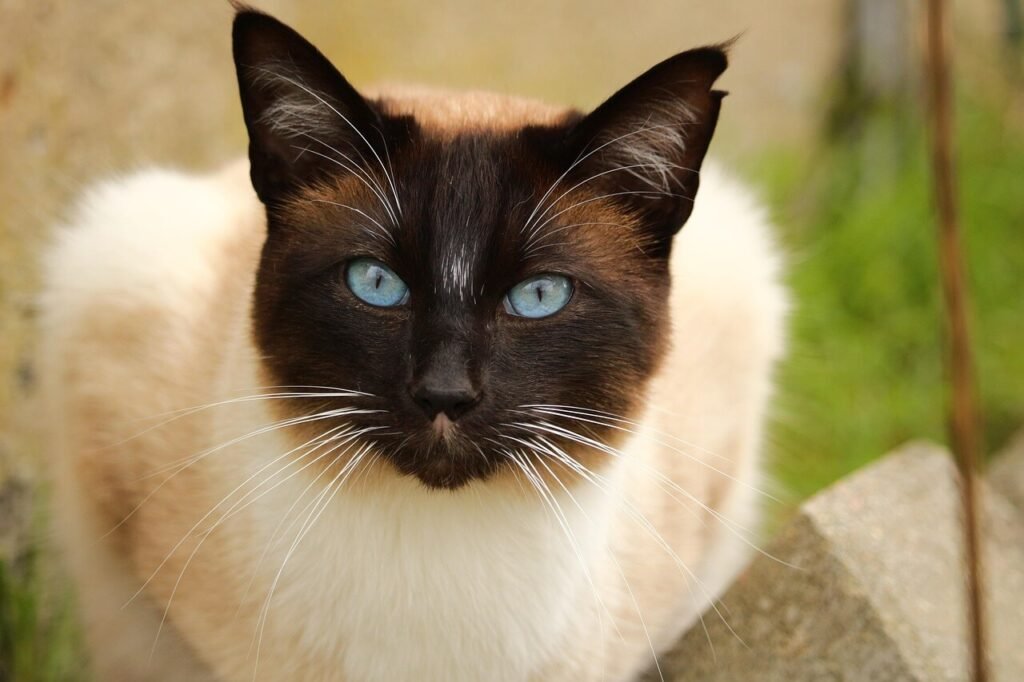Cat Whiskers Position Meaning: Decoding Your Feline’s Silent Language
Cats are masters of non-verbal communication, and their whiskers play a crucial role in expressing their emotions and intentions. These delicate yet highly sensitive tactile hairs are more than just adorable facial features—they’re vital tools that help cats navigate their environment, sense changes, and even convey how they feel. Understanding the meaning behind your cat’s whisker positions can deepen your bond with your feline companion and give you insight into their mood or state of mind. In this guide, we’ll explore what different whisker positions mean, how to interpret them, and why whiskers are so important to your cat’s overall well-being.
Reading Between the Whiskers: What Different Positions Reveal
A cat’s whiskers are like a built-in mood meter, subtly shifting to reflect their emotional and physical state. By observing these positions, you can better understand whether your cat is relaxed, curious, or feeling threatened. Here’s a breakdown of common whisker positions and their meanings:
Relaxed and Forward :
When a cat’s whiskers are slightly forward and relaxed, it indicates calmness and contentment.Pushed Forward :
Whiskers pushed forward suggest curiosity or excitement, often seen when exploring new environments.Pulled Back Against the Face :
This position signals fear, aggression, or submission, as the cat tries to protect its sensitive whiskers.Flat Against the Cheeks :
Flattened whiskers indicate extreme stress or anger, often accompanied by defensive behavior.Neutral and Still :
Neutral whiskers mean the cat is at ease, neither overly stimulated nor threatened.
Whisker positions are subtle but telling indicators of your cat’s inner world. Paying attention to these cues can help you respond appropriately to their needs and emotions.
The Role of Whiskers in a Cat’s Life
Whiskers, also known as vibrissae, are far more than decorative fur. They serve essential functions in a cat’s daily life, acting as sensory tools that provide critical information about their surroundings. Here’s how whiskers contribute to a cat’s survival and well-being:
Spatial Awareness :
Whiskers help cats gauge the size of openings to determine if they can fit through tight spaces.Environmental Detection :
Sensitive to vibrations and air currents, whiskers alert cats to nearby movement or changes.Hunting Assistance :
Whiskers detect prey movements in low-light conditions, enhancing hunting efficiency.Balance and Navigation :
Whiskers aid in maintaining balance and navigating uneven terrain or narrow surfaces.Protective Mechanism :
Whiskers act as an early warning system, helping cats avoid collisions or injuries.
Understanding the science behind whiskers highlights their importance in a cat’s life. These specialized hairs are indispensable for their safety, mobility, and interaction with the world.
Check this guide 👉Do Cat Whiskers Grow Back? Best 7 Expert Tips!
Check this guide 👉Cat Leg Whiskers: Best 7 Expert Tips!

Whisker Position | What It Means |
|---|---|
Relaxed and Forward | Calm, happy, and content |
Pushed Forward | Curious, alert, or excited |
Pulled Back Against the Face | Fearful, aggressive, or submissive |
Flat Against the Cheeks | Extremely stressed, angry, or defensive |
Neutral and Still | At ease, not overly stimulated |
Decoding Your Cat’s Whiskers: Tips for Better Communication
Once you understand what different whisker positions mean, you can adjust your interactions with your cat accordingly. Recognizing these signals allows you to create a safer and more harmonious environment for your feline friend. Here’s how to respond based on the whisker position:
If Whiskers Are Relaxed :
Engage in gentle petting or play, as your cat is likely in a good mood.If Whiskers Are Pushed Forward :
Encourage exploration by introducing new toys or activities to satisfy their curiosity.If Whiskers Are Pulled Back :
Give your cat space and avoid sudden movements to prevent escalating their stress.If Whiskers Are Flat Against the Cheeks :
Avoid direct interaction until they calm down; consider removing any perceived threats.If Whiskers Are Neutral :
Maintain a quiet, peaceful atmosphere, as your cat is comfortable and undisturbed.
By responding appropriately to whisker signals, you can foster trust and ensure your cat feels safe and understood.
Whisker Fatigue: What It Is and How to Help Your Cat
While whiskers are incredibly useful, they can also become overstimulated, leading to a condition known as whisker fatigue. This occurs when a cat’s whiskers are repeatedly touched or pressed against objects, causing discomfort. Here are signs of whisker fatigue and tips to care for your cat’s whiskers:
Signs of Whisker Fatigue :
Pawing at food bowls, reluctance to eat, or appearing agitated during meals.Switch to Wide, Shallow Bowls :
Use feeding dishes that allow whiskers to remain free while eating.Avoid Touching Whiskers Unnecessarily :
Respect your cat’s boundaries and avoid touching their whiskers unless necessary.Monitor Stress Levels :
Whisker fatigue may worsen if your cat is already stressed, so aim to reduce anxiety triggers.Consult a Veterinarian :
If symptoms persist, seek professional advice to rule out underlying health issues.
Whisker fatigue is manageable with proper care and attention. Ensuring your cat’s whiskers remain healthy contributes to their overall comfort and happiness.
Whiskers in Action: What They Reveal About Play Behavior
During play, a cat’s whiskers can provide valuable insights into their level of engagement and excitement. Observing whisker positions while your cat is playing helps you understand whether they’re enjoying themselves or feeling overstimulated. Here’s what to look for:
Whiskers Pushed Forward :
Indicates intense focus and excitement, often seen when stalking or chasing toys.Whiskers Relaxed but Alert :
Suggests the cat is having fun but remains comfortable and not overly stimulated.Whiskers Pulled Back Slightly :
May signal hesitation or uncertainty, especially if the play becomes too intense.Whiskers Twitching Rapidly :
Shows heightened arousal, which could lead to overstimulation if not monitored.Whiskers Held Neutral After Play :
Indicates the cat has calmed down and is transitioning back to a relaxed state.
Understanding these whisker cues during playtime allows you to tailor activities to your cat’s comfort level, ensuring playtime remains enjoyable and stress-free.
Beyond Mood: How Whiskers Reflect Your Cat’s Health
While whiskers are primarily used for communication and navigation, they can also serve as subtle indicators of your cat’s physical well-being. Changes in whisker condition or position may hint at underlying health issues that require attention. Here’s what to watch for:
Brittle or Broken Whiskers :
Could indicate nutritional deficiencies or poor diet quality.Whiskers Falling Out Excessively :
May point to stress, illness, or skin conditions affecting hair growth.Whiskers Held Flat Consistently :
Might suggest chronic pain or discomfort that needs veterinary evaluation.Unusual Whisker Growth Patterns :
Irregularities could be linked to hormonal imbalances or genetic factors.Whiskers That Seem Unresponsive :
If whiskers don’t react to stimuli, it could indicate nerve damage or sensory issues.
Monitoring your cat’s whiskers alongside other behavioral and physical signs can help you catch potential health problems early. Always consult a vet if you notice persistent changes.
Whiskers and Social Dynamics: Reading Cues in Shared Spaces
In multi-cat households, whisker positions can reveal a lot about social interactions and hierarchies among felines. Understanding these signals helps prevent conflicts and ensures harmony within the group. Here’s how to interpret whisker positions in social settings:
Whiskers Relaxed Around Other Cats :
Indicates trust and comfort, showing that the cats have established a peaceful relationship.Whiskers Pushed Forward During Greetings :
Suggests curiosity and interest in interacting with another cat or animal.Whiskers Pulled Back During Confrontations :
Signals fear or submission, often seen when one cat is trying to avoid conflict.Whiskers Flat Against the Face in Groups :
May indicate tension or aggression, requiring intervention to diffuse the situation.Neutral Whiskers During Shared Activities :
Shows that the cats are coexisting peacefully without competition or stress.
By paying attention to whisker positions in multi-cat environments, you can better manage relationships and create a harmonious living space for all your feline companions.
Frequently Asked Questions About Cat Whiskers
Can I trim my cat’s whiskers?
No, trimming whiskers can disorient and distress your cat, as they rely on them for navigation.
Why do cats have whiskers on their legs?
Leg whiskers help cats detect textures and movements near their paws, aiding in hunting and balance.
Do all cats have the same number of whiskers?
Most cats have 12 whiskers on each side of their face, but variations can occur.
What should I do if my cat loses a whisker?
Whiskers naturally shed and regrow, but monitor for unusual breakage or irritation.
Can whiskers predict a cat’s mood?
Yes, whisker positions provide valuable clues about a cat’s emotional state.
Final Thoughts: Unlocking the Secrets of Cat Whiskers
Cat whiskers are remarkable sensory tools that offer a window into your feline’s thoughts and feelings. By learning to interpret whisker positions, you can strengthen your connection with your cat and ensure their needs are met. Whether they’re relaxed, curious, or stressed, your cat’s whiskers tell a story worth listening to. Remember, these delicate hairs are essential to their well-being, so handle them with care and respect. With this knowledge, you’re now equipped to decode your cat’s silent language and provide the love and support they deserve. After all, understanding your cat’s whiskers is just one more way to celebrate the magic of living with these incredible creatures.
Understanding Bone Supplement for Cats: Best 7 Expert Tips! – Safe, vet-approved guidance for strong feline bones & balanced nutrition.
Bone Supplement for Dogs: Best 7 Expert Tips! – Expert guide to calcium, collagen & bone health for every life stage.
Understanding Can Cats Get Sunburn: Best 7 Expert Tips! – Protect your feline from UV damage with vet-backed prevention strategies.
How to Train a Seizure Alert Dog: Best 7 Expert Tips! – Learn expert-backed steps to nurture natural instincts into reliable, life-saving seizure alerts.





